What You Need to Know About Creatine

Creatine is one of the most well-researched supplements out there. I take it every day, as do several other fitness buffs. Here, I’ve condensed the research on creatine for you.
First and foremost, what is it?
Creatine is a molecule produced in the body that plays a role in energy production via donating a phosphate group to ADP, allowing it to become ATP.
It’s produced in the body primarily in the liver and kidneys, but also the pancreas at a rate of roughly one gram per day. It’s stored predominantly in the muscle.
In foods, it can be found in meat and fish. (Yes, this does mean that vegans will have lower resting concentrations of creatine.)
Supplementing with exogenous creatine can increase your levels by 20 to 40%, as you can see in this graph:
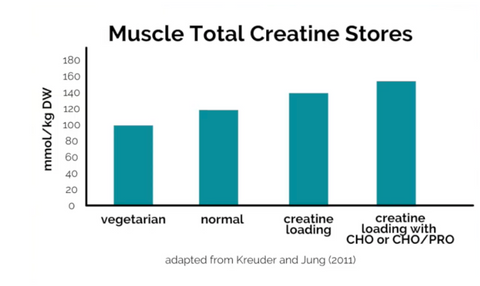
Okay, great. But what does it do?
Creatine has been found to increase exercise performance and is especially recommended for strength and power athletes. Following creatine loading, high intensity and repetitive exercise performance can increase by 10 to 20%.
Check out this list of the many performance-enhancing benefits of creatine supplementation:
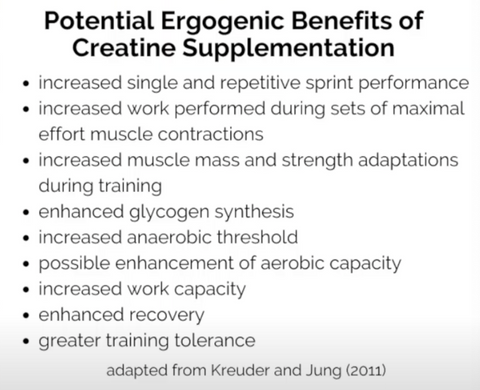
These benefits have been shown in adolescents, younger adults, older adults, and in both men and women. Further, it’s been shown to enhance recovery by maintaining optimal glycogen levels, reducing muscle damage, increasing tolerance to high volumes of training, and more.
How does it impact my muscle gains?
For resistance training individuals, creatine supplementation can help increase muscle mass.
Here’s a graph from a study on 25 football players after four weeks of creatine supplementation. As you can see, the creatine group shown in teal experienced a significantly greater increase in lean body mass compared to the placebo group.
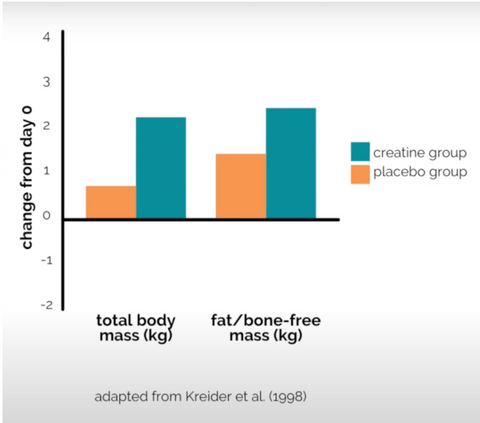
But wait, there’s more –
Did you know that creatine has cognitive benefits, too?
Supplementing with creatine can increase creatine content in the brain by 5 to 15%. This can help improve working memory, increase cognitive function, reduce mental fatigue, and also increase cognitive performance in response to sleep deprivation.
Also, during pregnancy, creatine supplementation has been found to promote fetal growth, development, and health.
In aging individuals, it can help lower cholesterol and triglyceride levels, reduce fat accumulation in the liver, enhance glycemic control, minimize bone loss, and more.
There’s actually quite a bit more, but for the sake of not dragging out this list, I’ll end this section here.
Okay, what about non-responders?
You may have heard about non-responders to creatine supplementation. This simply means that some people don’t experience the benefits I just went over.
From the studies I’ve read, roughly 20 to 30% of people are non-responders to creatine.
Check out this study from 2004. You’ll see here that the participants in purple saw little to no changes in their intramuscular creatine content after five days of creatine loading.
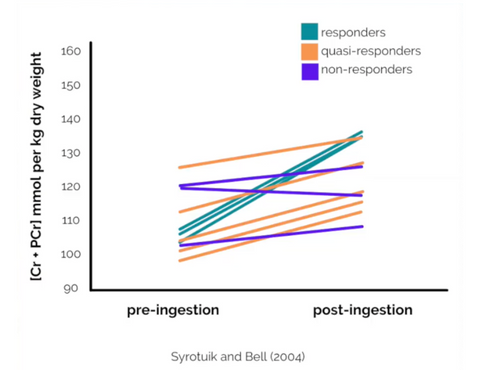
Unfortunately, there is no easy way to test for this besides simply taking more creatine and seeing if you notice the positive changes over time.
By the way, responders are those who have lower resting initial levels of total muscle creatine content, greater type two fibers, and higher potential to improve performance in response to creatine supplementation. That means that not all non-responders will be the opposite.
Before you get upset if you find out you’re a non-responder, think of it this way; it means you already have higher resting total muscle creatine content levels to begin with, so you don’t need to supplement.
Now you may want to know, is it safe?
To date, there have been over 1,000 studies on creatine conducted on infants to the elderly at doses ranging from 0.3 to 0.8 grams per kilogram of body weight per day for up to five years.
The research has consistently shown that there are zero adverse health risks and a plethora of performance and health benefits. Despite anecdotal claims, there has been no research demonstrating an increased risk of musculoskeletal injuries, dehydration, muscle cramping, GI upset, or renal dysfunction. The only consistently reported side effect insome individuals is weight gain due to water retention and protein and/or glycogen accretion. But don’t let this stop you from taking creatine, it is not body fat.
So the answer is, yes, supplementing with creatine is safe in healthy individuals of all ages.
How do I take it?
There are two primary ways to take creatine.
The first is creatine loading, which saturates your body’s creatine levels a lot quicker. This entails ingesting 0.3 grams per kilogram of body weight per day, split into four to five daily intakes for five to seven days. After that, you can drop your intake down to 0.03 grams per kilogram of body weight per day indefinitely.
Without the loading phase, it may take three to four weeks to increase your muscles’ creatine stores.
According to the ISSN Position Stand from 2017, you can simply take 3-5 grams per day indefinitely.
Also, taking your creatine supplement with a carb or a carb and protein seems to increase your muscular uptake of creatine, so maybe take it with a meal.
When should I take it?
In a 2013 study on healthy young male bodybuilders, taking creatine immediately post-workout as opposed to immediately pre-workout was found to be possibly more beneficial. If you look at this graph here, which shows the participants’ changes between the two groups over a four-week period, the post-workout slope is ever so slightly greater.
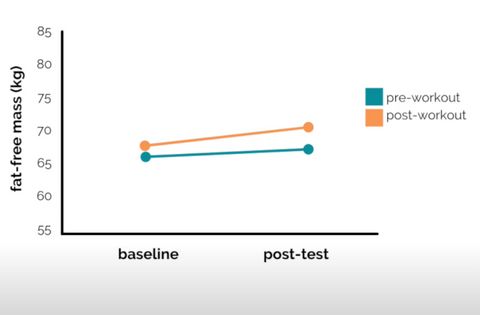
The authors thus concluded that taking creatine post-workout may be superior in terms of fat free mass gains.
The year, another study was conducted, this time on adults between ages 50 to 64. By the end of this 12-week intervention, there was no difference in lean body mass or strength changes in those who took creatine immediately before versus immediately after their training sessions.
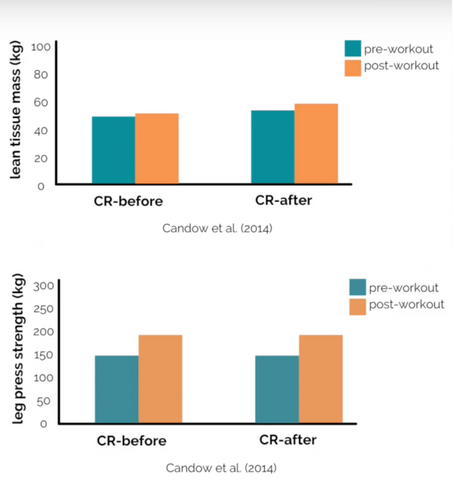
Then another study looked at creatine taken immediately pre- and post-workout compared to morning and then late evening. After 10 weeks, the first group taking creatine immediately before and immediately after their workout led to significantly greater intramuscular creating content, lean tissue mass, and muscle cross-sectional area of type II fibers.
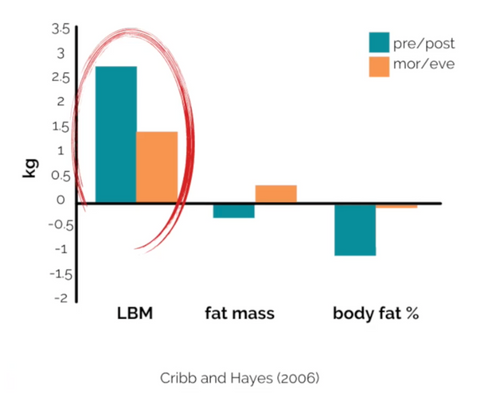
And then there was this meta-analysis, albeit in only three studies, from 2018 that found a slight edge on taking creatine post-workout.

So this is what the research says is “optimal”, but I’m going to throw in my two cents – successfully taking creatine regularly is more important than splitting hairs over timing. If you’re more likely to take your creatine consistently at a certain time of day that is not pre- or post-workout, then do it.
Given all of the benefits that creatine has to offer, I think it’s safe to say that taking creatine daily regardless of timing is going to be more beneficial than not taking it at all.
What brand should I take?
The only supplement company I trust and recommend is PEScience. (Full disclosure, I am sponsored by them!) They carry creatine in two forms, and the capsule form is what I take. They also have a powdered form which you can mix water or blend in with your protein shake. Use my code “soheefit” to get 15% off.





